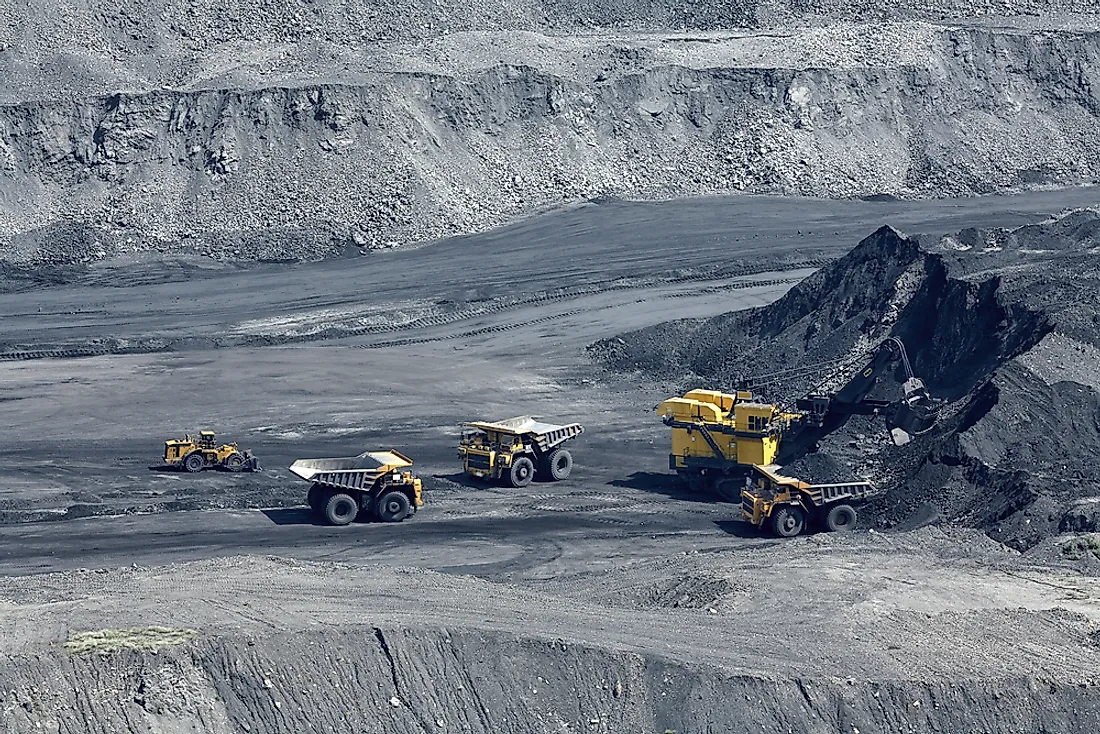What Are The Major Natural Resources Of Russia?

The Russian Federation is the largest country in the world. The country's vast territory makes it the richest nation in terms of natural resource wealth. The nation is a leading producer of coal, diamonds, aluminum, asbestos, gemstones, diamonds, lime, lead, gypsum, iron ore, bauxite, gallium, boron, mica, natural gas, potash, platinum, oil, rare earth metals, pig iron, peat, nitrogen, cadmium, arsenic, magnesium, molybdenum, phosphate, sulfur, titanium sponge, silicon, uranium, tellurium, vanadium, tungsten, cobalt, graphite, silver, vermiculite, selenium, rhenium, copper, and gold.
Platinum and Palladium
The country produced an estimated 91.16 tons of palladium and 25.9 tons of platinum in the year 2014. The commodities are obtained from various locations in the country including the Kondyor alluvial deposit found in Khabarovskiy which is about 621.3 miles from the city of Khabarovsk. The Kondyor mine produced an estimated 4.08 tons of platinum in the year 2014. The Yorgalan deposit located close to the Kondyor deposit has an estimated 14 tons of platinum reserves. The Norilsk-1 deposit is located on the Taymyr Peninsula, and contains 0.57 tons of Platinum group of metals. The Chernogorskoye nickel-copper-platinum deposit also contains a significant amount of platinum and is located on the Taymyr Peninsula, and to the south of the Norilsk-1 deposit. The government has in recent years increased spending to enhance the extraction of the platinum group of metals. The increased investment is supported by favorable global prices for both metals.
Coal
Russia holds the second highest coal deposits in the world only beaten to the top position by the US. The country has a total of 173 billion tons of coal deposits which represents 17.6% of global coal reserves. Coal is extracted across 129 separate deposits and 22 basins. About 85% of the nation's coal is produced across three jurisdictions namely the Zabaikal'skiy, Kemerovskaya Oblast, and the Krasnoyarskiy Kray. On the other hand, 66% of explored coal is extracted from two basins, Kuznetskiy basin, and the Kansko-Achinskiy basin. The Kansko-Achinskiy basin has 40.7% of the nation’s resource deposits. The Kuznetskiy basin contains 27.4% of the nation's resources, and it also produces the highest amount of coal in the nation. The Kuznetskiy basin produced an estimated 59% of the nation's output. Russia produced an estimated 393.4 million tons of coal in the year 2013. Total Anthracite coal production was 14 million tons while bituminous coal and lignite coal was 302.5 million tons and 75.9 million tons respectively. Open cast mining is the most popular method of coal extraction accounting for an estimated 70.6% of total production. Coal is mainly exported to China, the UK, Japan, and South Korea.
Natural Gas
Russia is among the largest producers of natural gas in the world. The country produced an estimated 22,707 billion cubic feet in gas in 2014. The country produces about 19% of global output. The market share has however been gradually decreasing due to increased production by countries such as Qatar, the US, and Iran. Russia's natural gas reserves are estimated to be 1,748 trillion cubic feet. The Urengoyskoye is Russia's largest natural gas deposit with about 187.17 trillion cubic feet. The Bovanenkovskoye deposit has an estimated 151.85 trillion cubic feet. Other significant deposits include the Yamburgskoye with 113 trillion cubic feet, Shtokmanovskoye deposit with 137.7 trillion cubic feet, the Zapolyarnoye and Astrakhanskoye each with about 88.3 trillion cubic feet in gas. About 80% of the country’s production comes from the Nadym-Pur-Taz region.The Urengoyskoye, Zapolyarnoye, and Yamburgskoye accounted for 40% of the total gas production. Natural gas is mainly exported to the European market. The main importers of Russian gas are Germany, Belarus, Turkey, Ukraine, Japan, Kazakhstan, and France.
Petroleum
Russia produced an estimated 579.8 million tons of oil in 2014. The country sits among the top three largest global producers of petroleum alongside Saudi Arabia and the US. The country refined an estimated 325.2 million tons of oil in the same year. A significant amount of oil deposits are located in Western Siberia. The Western Siberia deposits account for an estimated 66.6% of total production in the country. Eastern Siberia is also known to hold large amounts of oil reserves.
Titanium
The country produced an estimated 47,000 tons of titanium sponge in the year 2014 which represented a 2.2% increase in production compared to the previous year.
Other Metals
Russia is thought to have an estimated 25-40% of global un-mined gold reserves. The Russian Federation is the sixth largest gold producer in the world with an estimated 249 tons produced in 2017 alone. Russia has 10% of the world’s Uranium reserves. The country produced 8% of the world’s total Uranium output. The country also contributes 17% of the world total nickel production, and 22% of the world’s total magnesium output.
Challenges In Natural Resource Extraction
In recent years the country has witnessed mounting challenges in the extraction of its natural resources. Some of the challenges include inadequate capital investment owing to sanctions on the country from major global powers including the United States and Europe due to its involvement in the Ukraine conflict among other issues. Other challenges include difficulty accessing mineral resources in remote areas in the vast territory. The country is continuously developing mechanisms to overcome the challenges it faces. The country is keen on developing new automated technologies to replace aging equipment which severely limits production. The efforts to develop new indigenous technologies are also driven by restrictions on the importation of new mineral extraction technology from other countries imposed by some members of the international community. The nation’s declining population has also made it necessary to invest in technology.











